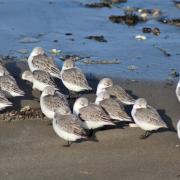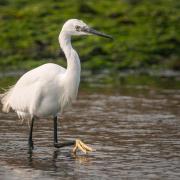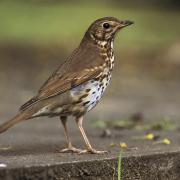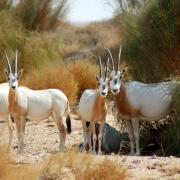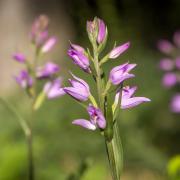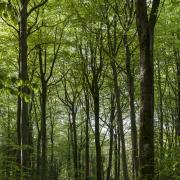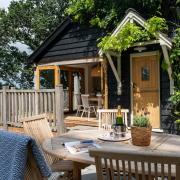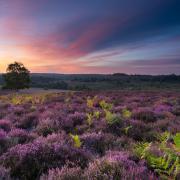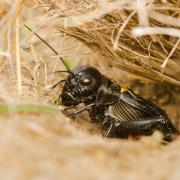Volunteers and rangers are working to halt the alarming decline in nightingales in Hampshire by rewilding the habitat in Botley Woods.

It may not look much, but a certain small brown flying migrant from Africa has inspired both Romantic poets and musicians with its distinctive song.
But in recent years the numbers of nightingales in the UK has been in serious decline – with Hampshire and Isle of Wight Wildlife Trust reporting an 80 per cent drop in numbers since the 1980s. Now Hampshire Countryside Service is working closely with the trust, Forestry England and the National Grid to create a habitat in Botley Woods conducive to nightingales, with the hope of enticing migrating pairs back to the county this spring.
“Nightingales are ground-nesting birds,” says Alex Foy, a ranger with the Hampshire Countryside Service based at Manor Farm in River Hamble Country Park. “They are quite secretive – they want a dense ground layer, which looks like a bit of a mess.”
To create this habitat teams of up to 60 volunteers have been taking part in layered coppicing sessions on the willow trees to create a dense green environment for the birds. “It’s quite damp, tough hard work in the undergrowth,” says Alex. “When it starts regrowing it will look lush and green.”

On top of the coppicing work deer exclosures are being created to prevent deer from nibbling at any new growth. “Once a nightingale finds a nesting site it will come back to it year after year providing there’s a stable environment,” says Alex. “Once they’re gone though, it’s hard to bring them back. In the last year we had three pairs, which is a bit of a decline from previous years. We’re hoping there might be a few more this year. Throughout history there is a lot associated with the nightingale, through poems and songs. They occupy a particular niche in terms of living in willow coppice and ground-nesting – not many other birds do that. It would be a shame if they were to be lost. You rarely see a nightingale, but you can hear them from quite a long way away.”
The work to encourage the nightingales has also attracted other species including skipper butterflies and nightjars. The volunteers and rangers have been inspired by the move towards rewilding – creating a more natural environment for living species. Although the rewilding movement has been gathering pace in the past few decades, it has recently risen to public notice through the publication of Wilding, by Isabella Tree, a book which documented the transformation of the 1,400-acre Knepp estate in West Sussex. After many years of intensive farming the land was allowed to return to nature, which in turn saw an increase in rare plants, insects, bats and birds – including nightingales and turtle doves. “It’s what a lot of people are aspiring to,” says Alex. “Lots of places are using Knepp as an example of how you can provide the right conditions and leave it alone it will eventually attract those species that are declining.”
Botley Woods is quite an unusual location in itself. “It is quite a large area of undisturbed woodland,” says Alex, who is part of a team looking after 23 different sites. “It is quite unusual for the developed part of Hampshire – there are lots of interesting species, such as the purple emperor and the grizzled skipper butterfly. It’s one of the biggest sites we look after.”
There are plans to run organised nightingale walks so visitors can hear the birds in song. Although there are a couple of footpaths which go through the site, Alex says they try to keep access to the woods through organised events like cross-country runs. “It’s tricky to keep that balance between allowing people access and nature conservation,” says Alex, who has been part of the Hampshire team for the past five years. “A species like the nightjar is vulnerable to disturbance by dogs.

“We will be monitoring the success of this project – we are experimenting a little bit. A volunteer will be monitoring nightingale numbers – we rely heavily on other people. It would be great to see an increase of nightingales this year.”
Good to know
Find out more about Hampshire Countryside Service’s work visit the website at hants.gov.uk/thingstodo/countryside/finder/botleywood
For more on Hampshire and Isle of Wight Wildlife Trust’s Nightingale Recovery Project visit hiwwt.org.uk/nightingales






